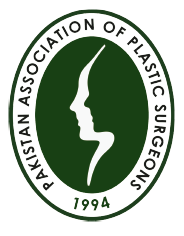
Replantation is the procedure that is undertaken for the reattachment of the amputated part that could be arm, forearm, hand or finger. The goal is to give patient the cut part back and returning as much of the function as possible.
1. Thumb
2. Multiple-digit
3. Transmetacarpal
4. Wrist
5. Forearm
6. Single digit in children
7. Individual digit distal to the flexor digitorum superficialis (FDS) tendon insertion
1. Life-threatening-associated injuries
2. Psychologically unstable patients
3. Systemic illness (e.g., severely arteriosclerotic vessels)
4. Severe crushing or avulsion
5. Multiple segmental injuries of the amputated part
6. Extreme contamination
7. Prolonged warm ischemia time in major limb amputation
This is a very important step. The amputee should be washed properly, wrapped in moist gauze and placed in a plastic bag, which in turn needs to be placed in another bag filled with ice.
It is a long procedure and sometimes takes 6-8 hours or more to restore the continuity. Different steps of procedure include:
Removing all the dirt and non-viable tissue and shortening the bone.
Fixation of bone by means of wire, plate or screws.
Repairing tendons, arteries, veins and nerves and skin.
The order may vary depending upon the hours since the amputation took place.
1. Failure of replant.
2. Stiffness of fingers.
3. Bone healing problems like nonunion, malunion
4. Loss of range of motion
5. Cold intolerance
6. Pain and numbness
7. Infection
Usually 50*75 % depending upon the type of injury, the zone of injury, the time since injury and the peri-operative care.
The alternate option is to get the amputated part shortened and closed properly and use prosthesis.
5-7 days depending upon the recovery.
1. Long term rehabilitation therapy.
2. Emotional support.
3. Cold intolerance
4. Multiple procedures for restoration of different hand functions e.g. release of the tendons, release of joints, late amputations etc
Outcome depends on the location and size of the fistula and status of surrounding tissues. Although most of the fistula closes after the surgery, some may recur and requires further surgery.
It usually takes less time than the original hypospadias repair and completes in less than an hour.
The surgery is performed under general anaesthesia and as a day care procedure. Patient can go home the same day after recovery from anaesthesia.
The most common complication is recurrence of the defect. Others complications include infection, difficulty in urination and stricture formation


